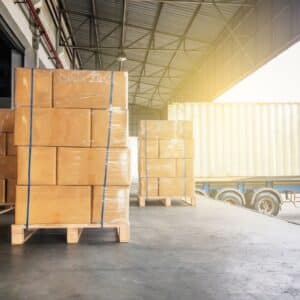When you live and work in Florida, you know hurricanes are as much a part of life as sunshine and beaches. But for businesses like CWI Logistics, natural disasters and unexpected disruptions aren’t just weather events—they’re challenges that test the strength of our operations and our commitment to our clients. At CWI Logistics, we’ve built a rock-solid approach to disaster preparedness and resilience in logistics operations in Florida that keeps our supply chain moving, no matter what Mother Nature or life throws our way.
In this article, we’ll walk you through how we prepare for and respond to disruptions like hurricanes, ensuring our clients’ businesses stay on track. Whether you’re asking your smart speaker about logistics solutions or diving into this blog for insights, we’ve got you covered with practical strategies that deliver results.
Why Disaster Preparedness and Resilience in Logistics Operations Matter
Let’s face it: disruptions in logistics can be costly. A single hurricane can shut down ports, flood warehouses, or delay deliveries for days—if not weeks. For businesses relying on just-in-time inventory or time-sensitive shipments, these disruptions can ripple across the supply chain, causing lost revenue, frustrated customers, and operational headaches.
At CWI Logistics, we know that being prepared isn’t just a nice-to-have; it’s a must. Our disaster preparedness and resilience strategies are designed to minimize downtime, protect assets, and keep our clients’ operations humming, even in the face of a Category 5 storm or an unexpected crisis.
So, how do we do it? It starts with a proactive mindset and a commitment to planning, technology, and adaptability. Below, we’ll break down the key pillars of our approach:
- Risk assessment
- Contingency planning
- Business continuity strategies
- Real-time disaster response management
These practices don’t just help us weather the storm—they ensure we come out stronger, with our clients’ trust intact.
Risk Assessment: Seeing the Storm Before It Hits
The first step in disaster preparedness is knowing what you’re up against. For CWI Logistics, that means conducting thorough risk assessments year-round, not just when hurricane season looms. We analyze potential threats specific to Florida and the broader Southeast, from hurricanes and flooding to power outages and even cyberattacks that can disrupt operations. By mapping out these risks, we can prioritize our resources and focus on the scenarios most likely to impact our clients.
Our risk assessment process is data-driven but grounded in real-world experience. We look at historical weather patterns, geographic vulnerabilities (like low-lying areas prone to flooding), and even client-specific needs. For example, a client shipping perishable goods through our temperature-controlled warehouses needs different protections than one relying on our trucking services. We also consider secondary risks, like road closures or port delays, that can cascade into bigger problems.
This isn’t a one-and-done exercise. We continuously update our risk profiles based on new data, client feedback, and emerging threats. By staying ahead of the curve, we’re ready to act before a storm even forms, giving our clients peace of mind that their logistics partner has their back.
Contingency Planning: Building a Playbook for Every Scenario
Once we know the risks, we build contingency plans to address them. Think of it like a football playbook—every play is designed for a specific situation, and we practice them so we’re ready when the game is on the line. At CWI Logistics, our contingency plans cover everything from rerouting shipments to securing backup facilities and suppliers.
For instance, during a hurricane, ports in Florida might close, but we’ve already identified alternative routes through inland hubs or secondary ports in neighboring states. If flooding threatens one of our warehouses, we have protocols to shift inventory to safer locations before the storm hits. These plans are detailed but flexible, allowing our team to adapt to real-time conditions.
We also work closely with our clients to align our contingency plans with their needs. If a client’s business relies on daily deliveries, we might pre-stage inventory in multiple locations to ensure uninterrupted service. For clients with high-value goods, we prioritize secure storage and enhanced tracking. By tailoring our plans to each client, we ensure they’re not just surviving a disruption but thriving through it.
Business Continuity Strategies: Keeping the Wheels Turning
Disasters don’t just test your preparation—they test your ability to keep going. That’s where business continuity strategies come in. At CWI Logistics, our goal is to maintain service levels no matter the circumstances. This means having redundant systems, diversified resources, and a team trained to execute under pressure.
One key strategy is diversification. We don’t put all our eggs in one basket. Our network of warehouses, trucking fleets, and third-party partners spans multiple regions, so a disruption in one area doesn’t bring our entire operation to a halt. For example, if a hurricane knocks out power at one facility, we can shift operations to our other hubs without missing a beat.
We also invest in robust communication systems. During a crisis, clear and timely communication with clients, employees, and partners is critical. Our team uses secure, cloud-based platforms to share real-time updates, ensuring everyone stays on the same page. Whether it’s notifying a client about a delivery reroute or coordinating with drivers to avoid hazardous roads, we keep the lines open and the information flowing.
Training is another cornerstone of our business continuity approach. Our team regularly runs drills to simulate disaster scenarios. These exercises help us identify gaps, refine our processes, and ensure every employee knows their role when a crisis hits. It’s like practicing for a big game—you don’t want to figure out your strategy when the clock’s already ticking.
Real-Time Disaster Response Management: Technology as Our Ally

Supporting Clients Through Crises
At the end of the day, our disaster preparedness and resilience strategies are about one thing: supporting our clients. Whether it’s a retailer needing to restock shelves after a storm or a manufacturer racing to meet production deadlines, we’re here to make sure their business doesn’t skip a beat. Our proactive planning, diversified resources, and real-time technology allow us to deliver consistent service, even when the world feels like it’s falling apart.
Take Hurricane Ian in 2022 as an example. As the storm barreled toward Florida, we activated our contingency plans, moving inventory to safer locations and rerouting shipments through unaffected ports. Our team worked around the clock to keep clients updated, and our tech systems ensured every delivery stayed on track. The result? Our clients’ supply chains kept moving, and their customers barely noticed the disruption.
CWI Has Mastered Disaster Preparedness and Resilience in Logistics Operations in Florida
Disasters are unpredictable, but your logistics partner shouldn’t be. At CWI Logistics, we combine human expertise, strategic planning, and cutting-edge technology to deliver resilience you can count on. Whether you’re asking Siri about reliable logistics providers or searching for a partner to weather the storm, we’re here to keep your business moving forward.
Our commitment to disaster preparedness means you don’t have to worry about what-ifs. From risk assessments to real-time response, we’ve got every angle covered. So, the next time a hurricane brews in the Atlantic or an unexpected disruption hits, you can trust CWI Logistics to keep your supply chain strong, your customers happy, and your business thriving.




